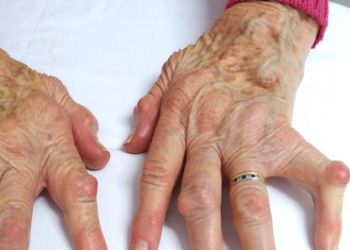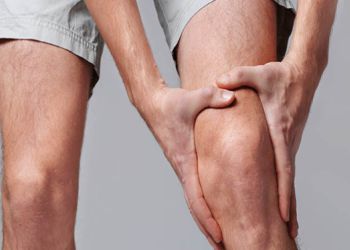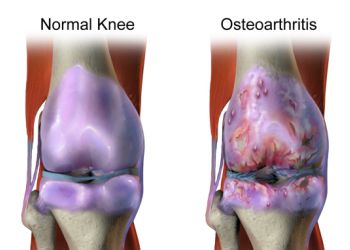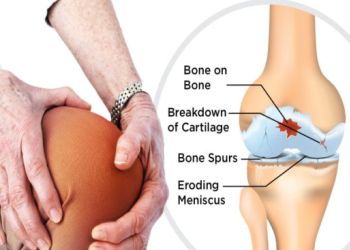Services
Osteoarthritis




What is osteoarthritis?
This is the most common form of arthritis mostly called as the ‘wear and tear’ disease. It is believed to be a degenerative disease and is caused by disregulation of normal degeneration and repair process of articular cartilages. Current view include genetic and low grade inflammatory process as causes for OA.
How does osteoarthritis affect joints?
In a normal joint, a firm rubbery material called the cartilage covers the ends of each bone. This acts as a cushion, or a shock absorber, providing a smooth surface between the bones.
In osteoarthritis, the smooth cartilage softens and becomes pitted, and with time sections of cartilages may be worn away completely, leaving the ends of the bones unprotected. Without their normal gliding surface, the joints become painful and difficult to move. As the cartilage breaks down further, the joint loses its shape, the bone underneath thickens and grow out of the sides (hook like spurs) further reducing movement.
What are the causes of osteoarthritis?
It was considered to be caused due to normal wear and tear of joints for a long time, but now several other factors are identified rather than one single cause.
- Age
- Joint damage by injury
- Joint damage by chronic obesity
- Heredity/genetic factors
- Low grade inflammation
Osteoarthritis is not caused by bacteria or poisons in the blood, acids in the body, diet deficiencies or excess, gland abnormalities, or weather, exercise or sudden shock, although these may influence pain due to arthritis
What are the symptoms of osteoarthritis?
- Pain/swelling of joints
- Stiffness of joints lasting for few minutes
- Pain that worsens with weight bearing and improves with rest.
- Morning stiffness for few minutes
How is Osteoarthritis diagnosed?
A thorough history of your joint pain will be collected by your doctor. Several blood tests may be necessary to rule our other forms of arthritis. X-ray of the affected joints may also be necessary. Usually base of thumbs, knees, spine & other weight bearing joints are most affected.
What is the treatment for osteoarthritis?
Since the cause of osteoarthritis is unknown, treatment will not reverse the changes to the joint, but much can be done to help. The disease process can be achieved. If the disabling effects of the disease are to be avoided, proper medical attention is essential. Neglect and delay are the worst enemies in overcoming osteoarthritis.
The treatment include
- Rest and guided exercise
- Weight loss
- Medications
- Surgery of badly affected joints
- Other forms of physical therapy
What are the medications used in osteoarthritis?
Generally, simple analgesics like paracetamol is all that is required for pain control.
Sometimes, non steroidal anti inflammatory drugs (NSAIDs) may be useful for pain relief, if needed. Intra articular Steroid/hyaluronan is also used at times to decrease symptoms of active disease. Glucosamine is a shark cartilage product that is found to be beneficial in osteoarthritis. Calcium supplements are also necessary. Treating co-existing morbidities like diabetes, hypertension,
low vitamin D state, chronic pain (fibromyalgia) also help in improving overall outcome.
How long is the treatment necessary?
Since the disease is the abnormality in the degenerative process occurring in joints that is a day to day process, treatment should be continued lifelong. It is similar to taking lifelong medicines for diabetes/high blood pressure.
Some tips to protect joints
Doctors and physiotherapists will sometimes advise you to use such devices as canes, crutches, and walkers. By using these aids you can take off the weight from your joints and help protect them from further damage. Protecting your joints also includes using correct posture as often as possible and there are a few basic rules to keep in mind.
- A firm mattress or bed board to keep your posture correct at night.
- Don’t slump: use a straight backed chair when possible.
- When walking or standing, pull your stomach in and keep your back as straight as you comfortably can.
- If you have osteoarthritis in your back or knees, limit lifting weights as much as possible.
- Avoid bending knees, squatting on the floor, climbing up and down for OA knees.
- Knee cap/brace, infrared lamp for heating & quadriceps exercise for knee OA are must.
- Life style changes like reducing weight goes a long way.
